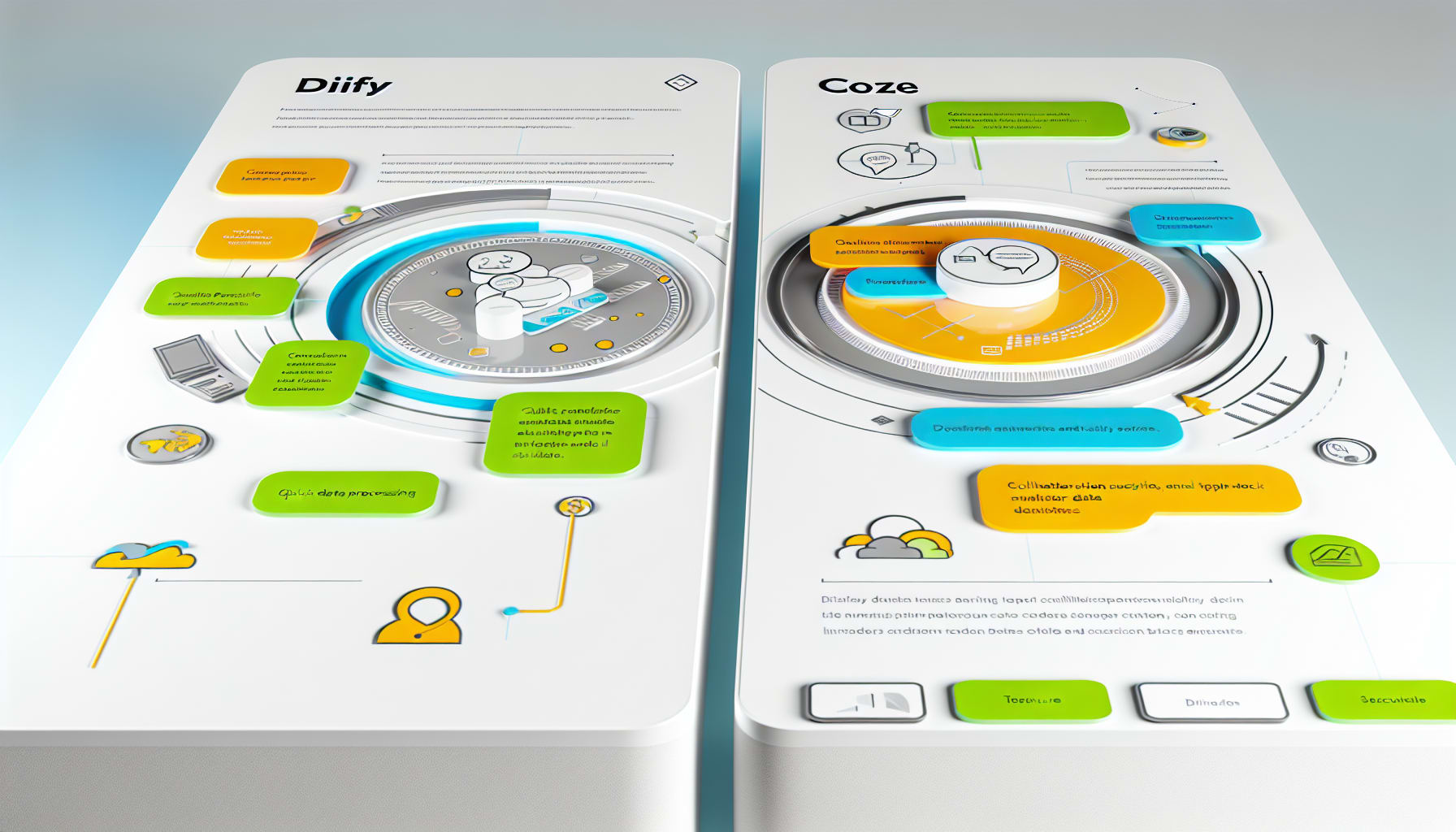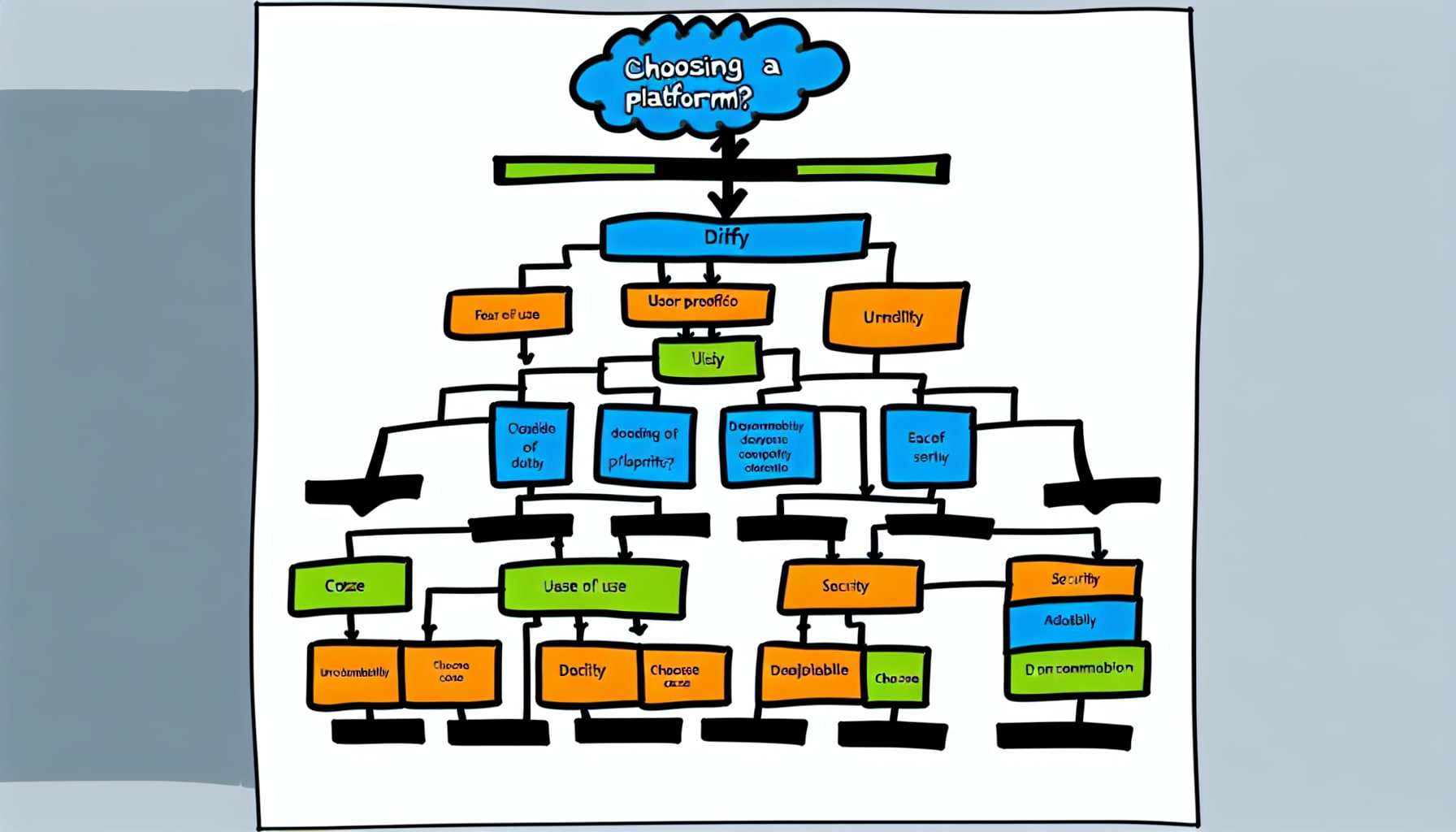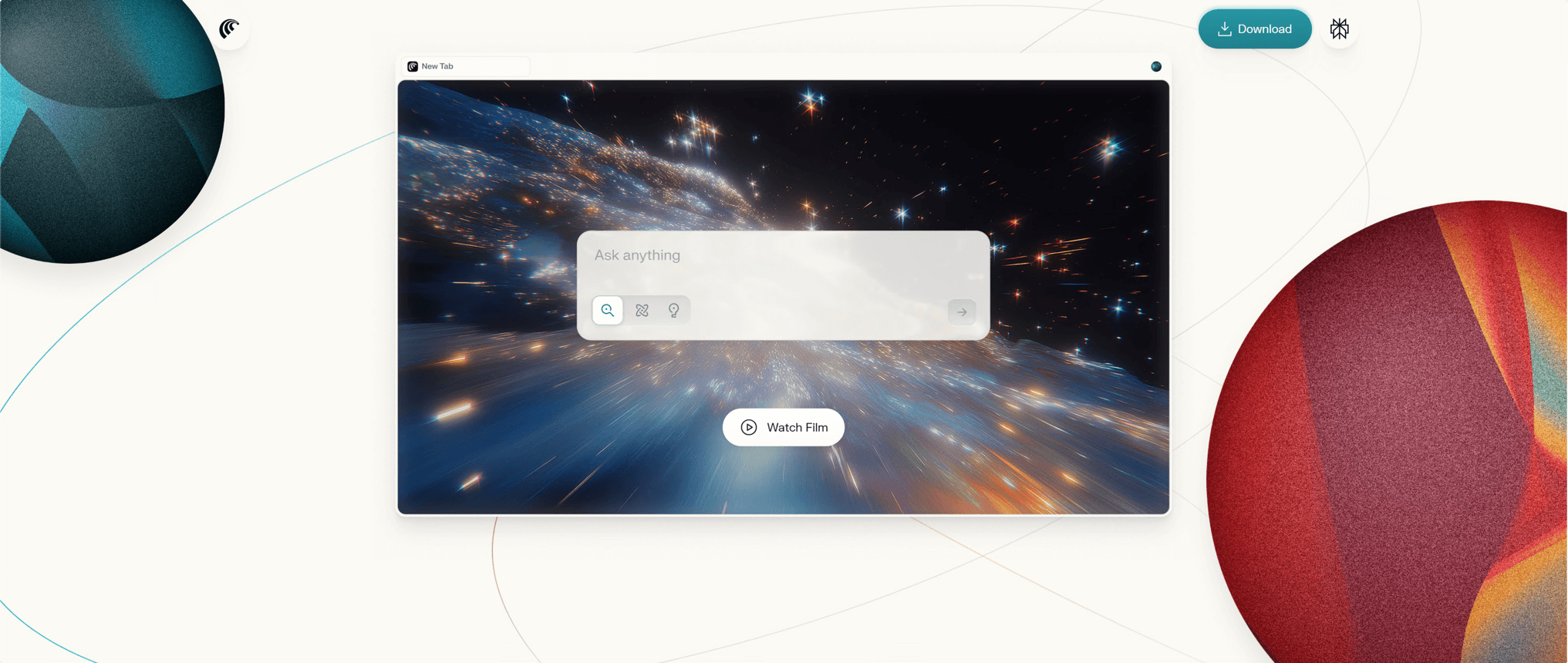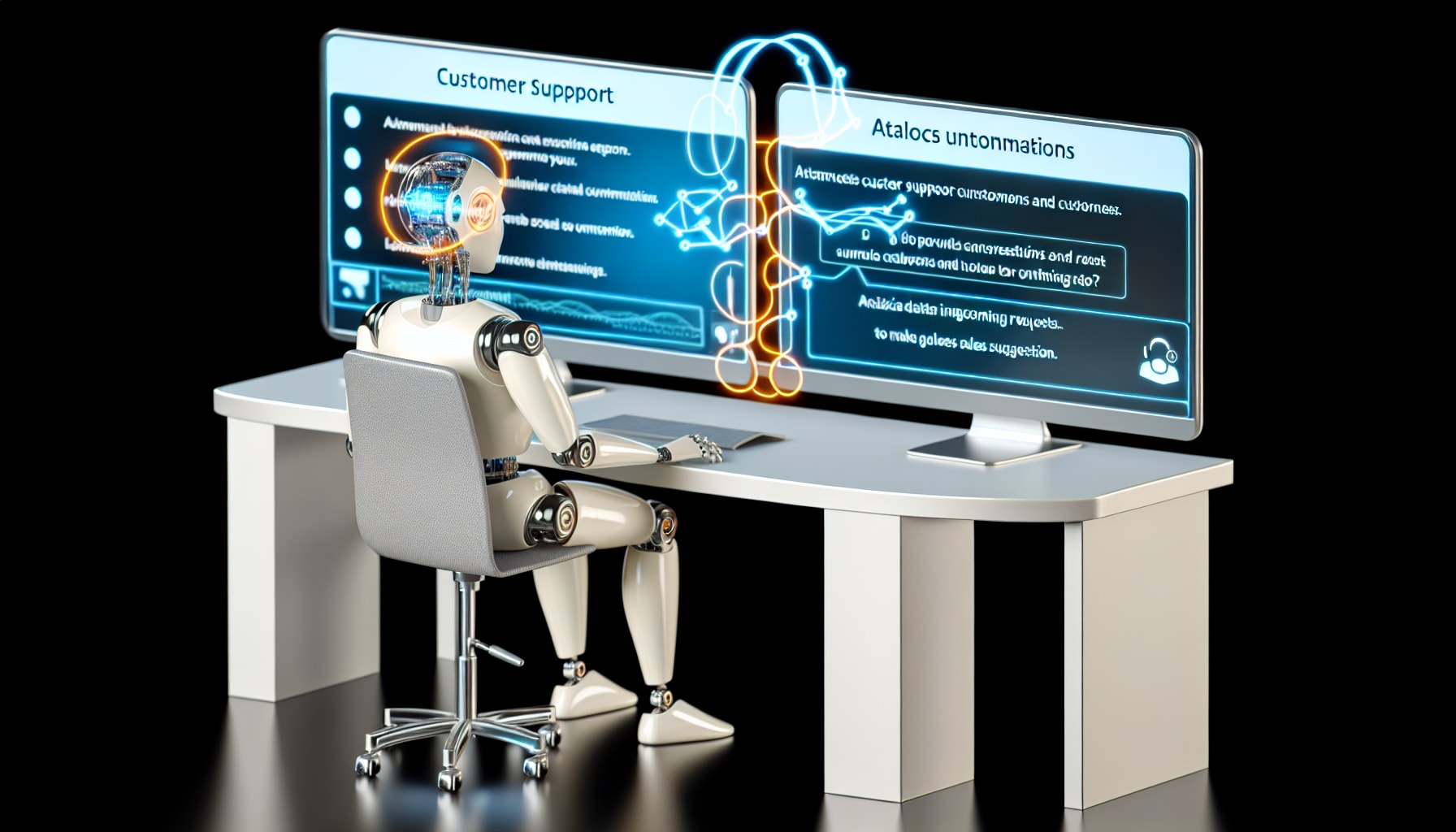A few months ago, I hit a wall. Not because I wasn’t working—I had plenty going on—but because everything felt stuck. I was halfway into building automations, juggling docs, scripts, and reminders, but none of it actually worked. The issue wasn’t a lack of tools; it was a lack of clarity. I didn’t need “more power.” I needed my mind to quiet down. That’s when I stumbled onto Dify and Coze. They are both platforms designed to build AI-powered applications and workflows, but they approach the problem from fundamentally different angles. On paper, they promise easier workflows. In practice, they helped me unblock completely different kinds of mental friction.
This article dives deep into a comparison of Dify and Coze. We won’t just list features; we’ll explore which platform is better suited for specific needs, from enterprise-grade application development to simple, automated personal assistants. We’ll examine their core technology, user experience, and practical applications to help you decide which tool will truly clear your head and get your ideas flowing.
Table of Contents
Core Features and Technology: Dify vs. Coze
When choosing an AI platform, the underlying technology dictates what you can build and how you can build it. Dify and Coze, while both enabling AI application creation, are built on different philosophies regarding model access, automation capabilities, and data security.
Language Model Support
The choice of Large Language Models (LLMs) is central to any AI application’s performance and cost.
Dify offers extensive model flexibility, while Coze focuses on curated, mainstream options.

Dify positions itself as a versatile LLM application development platform. It supports a wide array of models from providers like OpenAI, Anthropic, and Google, and even allows integration with open-source models from Hugging Face or self-hosted models via tools like Ollama. This makes it ideal for developers who need to experiment with different models or require a specific, fine-tuned model for their application. The ability to switch between models easily within the same application is a significant advantage for production environments where cost and performance need constant balancing.
Coze, on the other hand, provides a more streamlined selection. It integrates top-tier models like GPT-4o and Claude 3.5 Sonnet. Its domestic version in China also supports local models like Zhipu and Tongyi Qianwen. While this selection is smaller, it simplifies the development process for users who don’t want to manage a complex array of model providers and APIs. This curated approach aligns with Coze’s focus on ease of use.
Triggers and Long-Term Memory
Automating tasks and personalizing interactions are key benefits of AI agents.
Coze has built-in trigger and long-term memory functions, giving its bots proactive and stateful capabilities that Dify lacks natively.
A standout feature in Coze is its trigger functionality. This allows a bot to perform actions based on a schedule or a specific event. For example, you can set a bot to send a daily weather report at 8 AM or to automatically search a knowledge base when a new support ticket is created. This turns the bot from a reactive respondent into a proactive assistant.
Coze also incorporates a long-term memory feature. Most chatbots are stateless, meaning they forget the context of a conversation after it ends. Coze allows its bots to store information from past interactions in a database. This enables highly personalized experiences, such as a dinner recommendation bot that remembers what you’ve eaten before to avoid suggesting the same meal twice. This capacity for stateful conversation is crucial for building truly helpful assistants. Dify can achieve similar results, but it requires more manual setup, often involving external databases and custom code within its workflow.
Local Hosting and Security
For many businesses, data privacy and security are non-negotiable.
Dify’s open-source nature allows for self-hosting and complete data control, whereas Coze is a cloud-only service.
Dify is an open-source platform, which is a massive advantage for security-conscious organizations. You can download its source code and deploy it on your own servers (local hosting). This means all your data, from user interactions to knowledge base documents, remains within your own infrastructure. This is particularly important for industries like finance and healthcare that handle sensitive information. Dify’s team has also been transparent about its operations.
“Dify is developed and operated by LangGenius, Inc., a globally diverse team that adheres to US laws and data policies… Should you have any concerns about our cloud service, you are welcome to use our open-source version.” – Dify Official Statement
Coze, developed by ByteDance (the company behind TikTok), is a cloud-based service. While this simplifies deployment and maintenance, it means your data is processed on their servers. For many personal projects or less sensitive applications, this is perfectly acceptable. However, for enterprises with strict data governance policies, the lack of a self-hosting option can be a deal-breaker.
User Experience and Target Scenarios
A platform’s design and user experience reveal its intended audience. Dify is built for developers and product teams creating robust AI applications, while Coze is tailored for creators and businesses who want to launch functional chatbots quickly.
Low-Code vs. No-Code Development Experience
The learning curve and required technical skill can be a major factor in choosing a platform.
Dify provides a powerful low-code environment for building complex applications, while Coze offers a frictionless no-code experience for creating chatbots.

Dify is best described as an “AI application development platform.” It combines a visual workflow builder with features like a built-in RAG (Retrieval-Augmented Generation) engine and agent-based reasoning. While its interface is visual, creating a sophisticated application often involves configuring multiple nodes, managing knowledge bases, and potentially writing code snippets. This approach gives developers immense power and flexibility, making it a form of low-code development. It’s designed for building production-level generative AI applications that can be deeply integrated into existing business systems.
Coze, in contrast, is fundamentally a no-code chatbot builder. Its interface is incredibly intuitive, using a drag-and-drop system to add skills, plugins, and workflows. You can build a functional bot in minutes without writing a single line of code. This focus on simplicity makes it accessible to marketers, community managers, and entrepreneurs who have a great idea for a bot but lack the technical expertise to build it from scratch.
For Enterprise vs. For Individuals
The target market for each platform shapes its feature set and integration capabilities.
Dify is geared towards enterprise use cases and professional developers, whereas Coze excels in consumer-facing and individual creator scenarios.
Dify’s feature set—including self-hosting, detailed analytics, and flexible API integrations—is tailored for enterprise needs. It enables teams to build, deploy, and manage AI applications as part of a larger technology stack. As one analysis notes, Dify is ideal for those who want to “build] AI intelligent applications,” positioning it as a tool for creating software with AI at its core.
Coze shines in the consumer space. Its seamless integration with platforms like Discord, Telegram, and LINE makes it perfect for building community bots, personal assistants, or automated customer service channels for small businesses. The platform’s emphasis is on the conversational experience, aiming to help users quickly launch bots that can interact with people where they already are.
“Coze, developed by ByteDance, focuses on optimizing the user experience and rapid construction process, giving it an advantage among C-end (consumer) users.”
Multi-Platform Compatibility and Integration
How an AI application connects to the outside world is critical for its utility.
Coze offers out-of-the-box integrations with popular messaging apps, while Dify provides robust API and SDK support for custom integrations.
Coze’s strength lies in its pre-built connectors. With just a few clicks, you can publish your bot to major social and messaging platforms. This plug-and-play approach drastically reduces deployment time for common use cases.
Dify’s integration strategy is more developer-centric. It provides APIs and SDKs to embed its AI applications into websites, mobile apps, or internal business tools like Slack or WhatsApp. While this requires more development effort, it offers greater flexibility and allows the AI to become a native part of any digital product.
Practical Application: Building a Dinner Recommender with Coze
To make these differences concrete, let’s walk through building a simple yet powerful application: a dinner recommendation bot using Coze. This example showcases Coze’s strengths in automation, memory, and ease of use.
System Architecture and Database Design
The goal is to create a bot that suggests three dinner menus every day and remembers what the user has already eaten.
The system uses LINE as the user interface, Coze for the logic, and Coze’s built-in database for long-term memory.

First, we define the bot’s persona and prompt within Coze, instructing it to be a friendly assistant that suggests varied meal options. Then, we set up a simple database inside Coze to store the user’s meal history. The database would have columns like menu_name and consumed_date. This database is the core of the bot’s “long-term memory,” allowing it to check past entries and avoid repeating suggestions. This entire setup is done through Coze’s visual interface, without needing an external database service.
Trigger and Plugin Configuration
The bot needs to be proactive and intelligent.
A scheduled trigger initiates the daily recommendation, and plugins can be added to enhance its capabilities.
Using Coze’s trigger feature, we set a “Scheduled trigger” to run every day at a specific time, for instance, 10 AM. The trigger’s task is to execute a prompt that asks the bot to suggest three dinner menus, instructing it to first check the database to ensure the suggestions are new.
“Coze’s trigger function allows a bot to automatically perform tasks when specific conditions are met… By setting triggers appropriately, the bot can operate autonomously and perform tasks efficiently without user intervention.”
While not strictly necessary for this simple bot, we could also add plugins like “Google Web Search” to allow the bot to find recipes or nutritional information for its suggestions, making it even more helpful.
LINE Message Push and User Interaction
The final step is to connect the bot to the user.
Coze’s one-click publishing feature deploys the bot to LINE, enabling automated daily messages and interactive conversations.
After configuring the bot, we use the “Publish” button in Coze. It provides a simple checklist of supported platforms. We select LINE, follow the authentication steps, and the bot is live. From that point on, it will automatically send a message with three dinner suggestions every morning. If the user replies, “I’ll eat Spaghetti Carbonara,” the bot can be configured to parse that message and save “Spaghetti Carbonara” to its database, ensuring it won’t be suggested again soon. This practical example highlights how Coze’s unique features work together to create a useful, automated agent with minimal effort.
Decision Guide: How to Choose Between Dify and Coze?
Choosing the right platform comes down to your project’s goals, your technical comfort level, and the ecosystem you want to operate in. There’s no single “best” tool, only the right tool for the job.
AI Application Development vs. Automation Flow Needs
What are you trying to build?
Choose Dify for building complex, production-grade AI applications; choose Coze for creating task-specific automated chatbots.

If your goal is to develop a standalone AI-native application—like an intelligent document analyzer, a content generation suite, or an AI copilot deeply embedded in your product—Dify is the superior choice. Its strength lies in orchestrating complex workflows, managing multiple knowledge sources with its RAG engine, and offering the flexibility to use custom models. It’s a platform for building software products.
If your goal is to automate a specific conversational workflow—like a customer support bot, a community moderator, or a personal assistant like our dinner recommender—Coze is more efficient. Its strengths are speed, ease of use, and seamless deployment to messaging apps. It’s a platform for building helpful bots.
Technical Threshold and Extensibility
How much control do you need?
Dify offers high extensibility and control for developers, while Coze prioritizes simplicity and a low technical barrier to entry.
Developers who want fine-grained control, the ability to self-host for security, and the freedom to integrate any LLM will find Dify’s open architecture liberating. It’s a platform designed to be extended and customized. This makes it a powerful tool in the hands of a technical team.
Creators, marketers, and business owners who want to go from idea to functional bot as quickly as possible will appreciate Coze’s no-code approach. The platform handles the technical complexity behind the scenes, letting you focus on the bot’s personality and function. The trade-off is less control over the underlying infrastructure and model selection.
Ecosystem and Community Support
Where do you find help and resources?
Dify’s ecosystem is developer-focused and open-source, while Coze’s is more commercial, with a rich store of pre-built assets.
The Dify community thrives on GitHub and Discord, where developers share solutions, contribute to the codebase, and discuss advanced implementation strategies. It’s an ecosystem built on collaboration and technical depth.
Coze fosters its community through its Bot Store, Plugin Store, and Workflow Store. This allows users to share and monetize their creations, creating a marketplace of ready-to-use components. It’s an ecosystem designed for rapid discovery and deployment, which is particularly beneficial for non-technical users.
Conclusion
Both Dify and Coze are excellent platforms, but they provide clarity for different kinds of problems.
Dify provides the clarity of control. It’s for builders who want to architect a robust, secure, and highly customized AI application from the ground up. It’s the right choice when the AI is the core product.
Coze provides the clarity of simplicity. It’s for creators who want to automate a task, launch a helpful bot, and see results immediately. It’s the right choice when the AI is a tool to accomplish a specific, conversational goal.
So, before you choose, ask yourself: Am I building an engine, or am I building a helpful robot to handle a task? Answering that question will point you to the platform that will best quiet your mind and turn your stuck ideas into a working reality.









